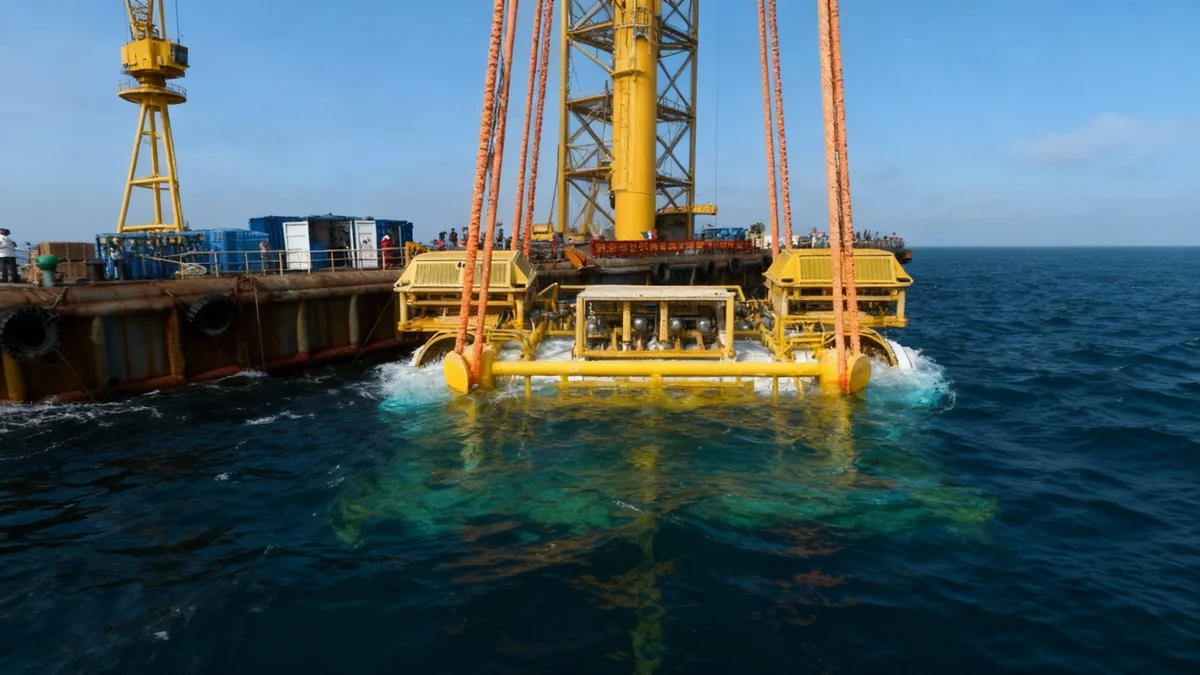A Chinese company has launched the world's first commercial-scale underwater data center, a significant step in addressing the massive energy and water consumption of modern computing. The facility, located off the coast of Hainan province, uses the ocean's natural cooling properties to reduce operational costs and environmental impact.
Key Takeaways
- China's Highlander has made an underwater data center commercially operational in Hainan.
- The facility uses seawater for cooling, which can reduce cooling-related energy costs by up to 90%.
- This initiative is part of a global trend to find sustainable solutions for the growing energy demands of artificial intelligence.
- Other proposed solutions include floating data centers and ambitious plans for facilities in Earth orbit.
A New Approach to Data Cooling
The new facility in Hainan represents a major development in data center infrastructure. Land-based data centers require enormous amounts of energy, primarily for cooling the servers that power AI and other intensive computing tasks. By placing the servers underwater, the project leverages the constant low temperatures of the deep sea.
According to the company, this method dramatically lowers the need for traditional, energy-intensive cooling systems. The natural circulation of ocean currents provides a consistent and efficient way to dissipate heat generated by the computer hardware.
Efficiency and Power Gains
The benefits of this submerged design are substantial. Highlander reports that the underwater environment allows for a 90% reduction in cooling costs compared to a conventional land-based facility. This energy saving translates directly into improved performance.
The company claims the system can deliver 40% more computing power than a land-based data center of a comparable size. This is because more of the facility's energy budget can be allocated to processing data rather than running cooling equipment.
Powered by Renewables
The Hainan underwater data center is largely powered by a nearby offshore wind farm. The company states that renewable sources provide approximately 95% of the facility's electricity, further reducing its carbon footprint.
The Global Search for Sustainable Computing
The launch of China's facility comes as the technology industry grapples with the environmental cost of the AI boom. While Microsoft and other companies have previously run successful experiments with underwater data centers, this is the first project to be deployed at a full commercial scale.
The primary challenge for land-based data centers is their immense consumption of fresh water. Many large-scale facilities are built in arid or water-stressed regions, creating competition for a vital resource needed by local communities and agriculture.
Water Scarcity Concerns
For example, new data centers planned by OpenAI are slated for construction in Texas, New Mexico, and the Midwest—areas of the United States that frequently experience water shortages. This trend highlights the urgent need for alternative solutions that do not strain local water supplies.
Floating and Space-Based Alternatives
The industry is exploring several innovative concepts beyond submerged facilities. One promising idea is the development of floating data centers. Tech giants Samsung and OpenAI have announced a collaboration to explore this option.
In a statement, Samsung noted that floating data centers could "address land scarcity, lower cooling costs and reduce carbon emissions."
An even more ambitious proposal involves moving data centers off the planet entirely. Amazon is reportedly investigating the possibility of building AI data centers in space. In Earth's orbit, the extreme cold would provide natural cooling without any need for water.
These orbital platforms would be powered by large solar arrays, offering a potentially limitless source of clean energy. While still a long-term vision, some proponents suggest that with advances in rocketry, space-based data centers could become viable by 2037.
Growing Pressure in Europe
The challenge of data center sustainability is particularly acute in Europe. The European Union aims to triple its data center capacity within the next five to seven years to remain competitive in the global AI race. However, this expansion poses significant environmental risks.
According to reports, 34% of Europe's population already lives in areas affected by seasonal water scarcity. Countries like Spain and Greece, which are planning major data center buildouts, are among the most water-stressed nations on the continent.
The situation in the United Kingdom also illustrates the problem. Water usage by data centers in Scotland has reportedly quadrupled since 2021. This increased demand comes at a time when the country's water infrastructure is under severe strain, with utilities facing criticism and substantial fines for leaks and service failures.
- UK Water Infrastructure: British water utilities paid £158 million in fines for failings related to water and sewage leaks.
- Scottish Data Centers: Some facilities use over 13 million liters of water annually for cooling.
As the demand for AI continues to grow, solutions like underwater, floating, and eventually space-based data centers may become essential to balancing technological progress with environmental responsibility. The commercial operation in Hainan is the first concrete example of this new frontier in sustainable computing.





